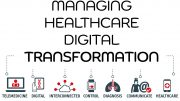The need to promote safe healthcare systems has been recommended for more than two decades. The modern patient safety movement was popularised through the report “To err is human: building a safer healthcare system”, which stated that avoidable errors could be mitigated by the creation and implementation of “safe systems”.
Despite significant advances over the past 20 years, such as reduced hospital infections and safer patient handovers, patient safety remains a global challenge for society today.[i] Millions of patients worldwide still suffer harm from unsafe healthcare practices, and it is estimated that in high-income countries one patient for every ten is subject to adverse events while receiving hospital care.[ii] Addressing patient safety is not only critical for optimal patient experience and improved outcomes, but improper practice also comes at a cost. In high-income countries, up to 15% of hospital expenditure is due to safety failures, and the NHS has cost implications of approximately £1.63 billion.[iii],[iv]
Furthermore, there is a social cost of patient harm. Consider a patient who has suffered harm and is the breadwinner for their family, their whole environment will change. The global social cost of patient harm is valued at $1-2 trillion a year and eliminating harm could boost global economic growth by more than 0.7% annually.[v]
Safe healthcare decision-making is critical for patient safety, as these individual decisions guide patient diagnosis and treatment activities. In this context, the use of clinical guidelines and evidence-based guidance is considered essential practice for improving quality and patient safety. But first, it is important to recognise that decision-making in healthcare is based on a dual process theory:
- A fast, non-analytic, implicit, and biased process, often based on heuristics
- An explicit analytical process that relies on hypothetical and counterfactual reasoning
In everyday life, we tend to think that all our decisions are analytic, though, in reality, the occurrence of non-analytic and implicit decisions is far greater. This is no different in the healthcare setting. With the time pressures and competing priorities that clinicians face day-to-day, many resort to intuitive decisions. While this rapid decision-making strategy can save time and often result in favourable patient care outcomes, by nature it is more error-prone when patient cases are more complex and when healthcare professionals (HCPs) are already overburdened.
Safe systems under crisis
Safe systems ultimately promote an environment that facilitates success, rather than preventing failure or error. In literature, safe systems are described as a set of safe processes to prevent errors, though this does not necessarily translate to practice when it comes to healthcare. In healthcare, safe systems help clinicians bridge the gap from theory to real-world settings. Safe systems in healthcare therefore have a second component, they must create an environment that fosters safe decision-making.
During the COVID-19 pandemic, it became clear that safe processes alone do not guarantee safety at all stages of care, as processes are inherently intertwined with individual decision-making activities. The pandemic accelerated the need for changes in processes and procedures. Factors such as high. High patient admissions to acute units, infection prevention measures, staff redeployment, and PPE scarcity, all meant that staff required new processes to nudge them in the safest direction possible.
The exponential growth of new scientific knowledge during the pandemic highlighted clinical knowledge is never static. In fact, it comes at a pace that is near impossible for HCPs to keep up with and incorporate into their decision-making. Even today, there are over 580,000 full-text articles indexed in the WHO COVID-19 database alone.
So how can we enable safer clinical decision-making to deliver sustainable high-quality care and patient safety?
Establishing safer healthcare systems through decision support and nudging
Safe systems must connect people, processes, knowledge, and technology. Considering that the current healthcare workforce is under huge strain, digital technology can help HCPs make more informed decisions, in the form of decision support and nudges.
Healthcare system leaders and HCPs must work to ensure that the best evidence-based information is available at the correct point of a patient’s healthcare journey. They must also consider the patient’s values and their own clinical expertise, for the best evidence-based practice. However, accessing appropriate and relevant knowledge to support clinical reasoning and decision-making requires a clinician’s knowledge base to be efficient, easy to use, and relevant.
Nudges are a tool designed to optimise choices by encouraging safer and healthier behaviours. The fundamental aspect of nudge is the maintenance of the individual’s freedom of choice, meaning that even though choice architecture can encourage the user to make decisions based on nudges, the decision to follow through with the prompt is still up to the individual to make. Safe nudges in the workflow can range from reminders of standard operating procedures to active support for clinical decision-making.
As nudges are part of our day-to-day lives, they must be intentionally designed to promote safety by acting as reminders of safety measures or by fulfilling information gaps. In that context, nudges should ultimately be designed to increase navigability and support clinicians and patients to make safer decisions.
Looking ahead
As systems progress and evolve, an increased focus must be placed on the importance of an environment that fosters safe decision-making. Safe systems that successfully connect processes and decision-making create an environment that fosters safe choices and actions. Nudges fundamentally guide users while respecting their freedom of choice, increasing the sustainability of safety and improving the quality of care.
Healthcare leaders have the opportunity to act as decision-environment architects, by adapting and improving the system, to provide knowledge at the point of care to support safer decisions. By taking these steps, we can progress towards delivering more sustainable, high-quality care, and safeguard the well-being of patients throughout their journey.
By Laís Junqueira, Quality, Patient Safety and Innovation Manager, Elsevier
References
[i] Haskins J, 20 years of patient safety. Washington: Association of American Medical Colleges; 2019
[ii] Slawomirski L, Auraaen A, Klazinga N. The economics of patient safety: Strengthening a value-based approach to
reducing patient harm at national level. Paris: Organisation for Economic Cooperation and Development; 2017
[iii] Slawomirski L, Auraaen A, Klazinga N. The economics of patient safety: Strengthening a value-based approach to
reducing patient harm at national level. Paris: Organisation for Economic Cooperation and Development; 2017
[iv] NHS Resolution, Annual report and accounts 2017/18. London: Crown; 2018
[v] Slawomirski L, Klazinga N. Economics of patient safety: from analysis to action. Paris: Organisation for Economic Cooperation and Development; 2020





